

FIELD MARSHAL MUNIR SAYS HIS 2ND US VISIT MARKS ‘A NEW DIMENSION IN PAK-US
TIES’
g TERMS INDIA’S RAW INVOLVEMENT IN TRANSNATIONAL TERRORIST ACTIVITIES
CAUSE OF SERIOUS CONCERN AT GLOBAL LEVEL
g SAYS OCCUPIED KA SHMIR IS NOT AN INTERNAL MATTER OF INDIA




PAKISTAN UNVEILS NATIONAL ARTIFICIAL INTELLIGENCE POLICY TO CREATE 3 MILLION JOBS BY 2030


with the
(ILO) and the Small & Medium Enterprises Development Authority (SMEDA), recently held a consultation session focused on overcoming obstacles faced by the textile and automobile industries The meeting aimed to identify critical challenges confronting enterprises and prioritize incentives to encourage the formalization of Small and Medium Enterprises (SMEs) along with their supply chains Participants contributed feedback on existing issues and offered practical suggestions to help shape a future national strategy for SMEs formalization Key attendees included M Naeem Ansari, National Project Coordinator at ILO; Syed Nazar Ali, Secretary General of EFP; Mukesh Kumar, Deputy General Manager at SMEDA; and Muhammad Awais Project Consultant for SME Formalization
Welcoming the guests SVP Khalid Riaz of the SITE Association highlighted how many member businesses have consistently contributed to the Sindh Employees’ Social Security Institution (SESSI) and the Employees’ Old-Age Benefits Institution (EOBI) fulfilling their legal duties yet receiving little recognition or visible returns He advocated for capping contributions to SESSI and EOBI, especially for SMEs operating on thin profit margins,

emphasizing that formalization must be value-driven rather than purely regulatory Simplification of registration and inspection processes, coupled with timely and visible services for compliant employers are essential to success Participants were informed about ILO and SMEDA s collaborative development of a national roadmap for SME formalization in Pakistan This initiative seeks to transition SMEs from the informal to formal economy through evidence-based research and inclusive stakeholder engagement with a particular focus on export-driven value chains in textiles and automotive sectors
Muhammad Awais shared findings from a comprehensive baseline study assessing informality and value chain dynamics within these industries
Majyd Aziz former president of EFP and former chairman of SAI welcomed ILO s presence in Karachi and praised SMEDA s efforts He acknowledged labour and environmental compliance challenges, especially for export-oriented textiles under constant buyer pressure He urged government
support to assure social safety nets and recommended reserving 10-15% of government procurement for SMEs to encourage formalization Aziz also suggested that large industries assist SMEs in meeting occupational safety and health standards
Anwar Aziz regional chairman of APTPMA discussed the financial impact of minimum wage policies and proposed imposing a turnover-based charge on all industrial and commercial enterprises to provide social protection for all workers He also shared his perspective on gratuity laws
Former SVP Abdul Kadir Bilwani called for abolishing withholding tax to ease burdens, revisiting SME definitions, capping social benefit contributions, and transferring management control of Valika Hospital to SITE along with associated contributions He highlighted the heavy tax and regulatory burdens facing SMEs
Syed Nazar Ali stressed the importance of sustainable business practices encompassing climate, social, and economic dimensions, noting that despite benefits many remain hesitant to formalize
The session included participation from President Ahmed Azeem Alvi Vice President Muhammad Riaz Dhedhi, Azeem Motiwala, Junaid-urRehman, Ahmed Zulfiqar Chaudhry, and representatives of the textile and automobile industries Muhammad Tahir Goreja chairman of the Labour
Sub-Committee concluded with a vote of thanks
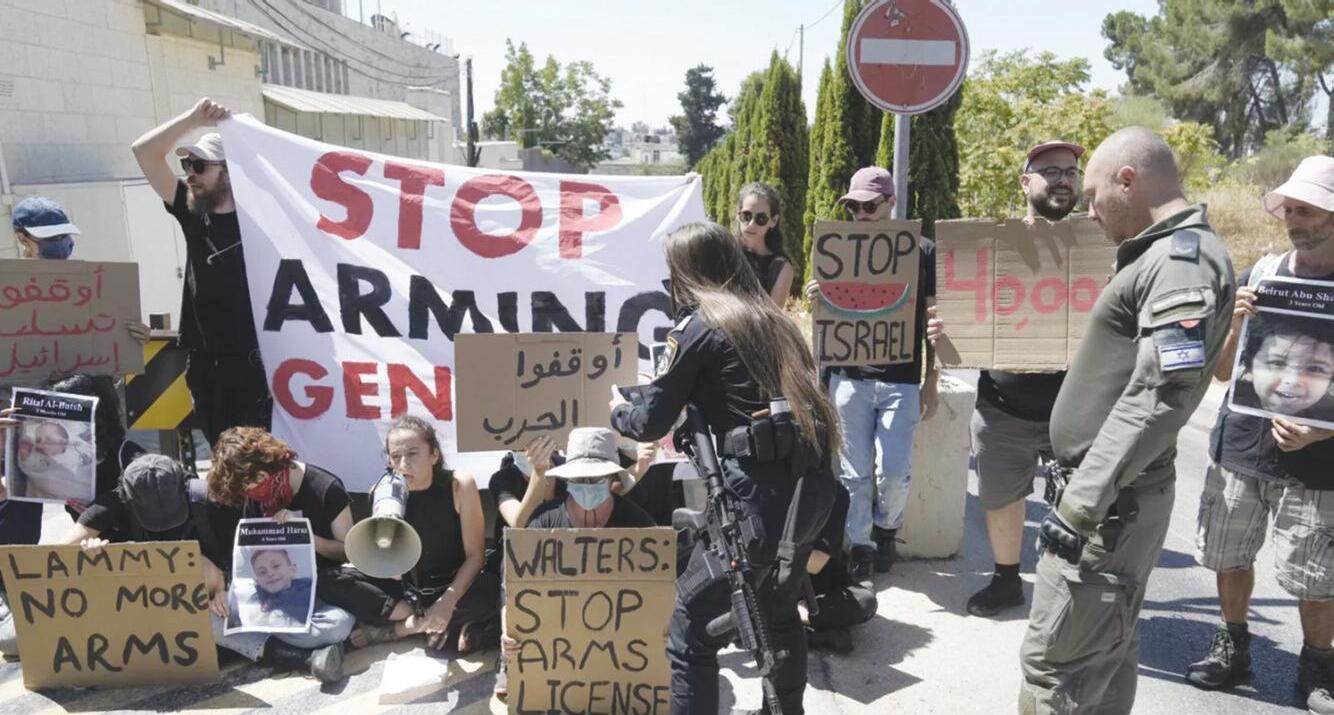

AUtHorIt y cl ArIfIeS BrIef
cloSUreS At ISl AMABAD AIrPort AHeAD of I-DAy
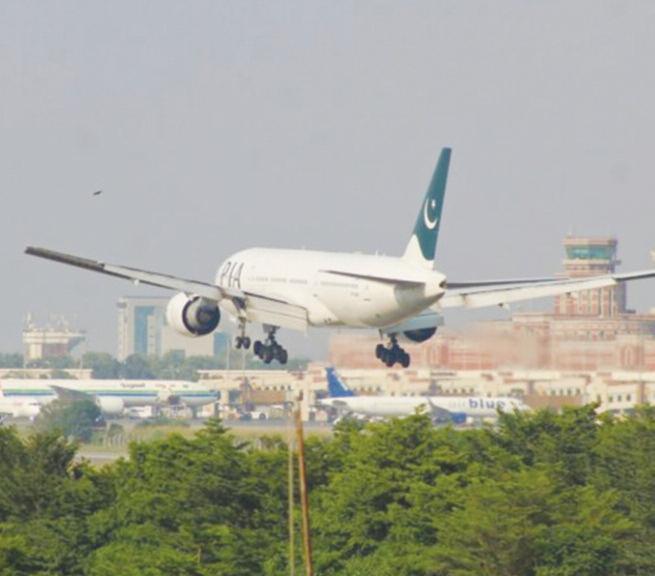
Sindh govt to ex tend e -bike scheme to minority workers
S tA f f r E p o r t

The Sindh Workers Welfare Board (WWB) on Sunday decided to extend its upcoming electric bikes scheme beyond women to industrial workers from minority communities
The move coincides with the National Minorities Day, which is celebrated on August 11 every year It commemorates the historic speech by Muhammad Ali Jinnah, the founder of Pakistan, made on Aug 11, 1947 where he emphasised equal rights for all citizens regardless of religion
According to a statement Sindh Labour Secretary Rafique Qureshi underscored the symbolic significance of this step, noting that “the white stripe in Pakistan’s flag represented minorities and their
equal rights”
Religious freedom remains a challenge in Pakistan with recurring incidents of mob attacks forced conversions and blasphemy cases, as noted by the European Union s Sebastien Lorion Just last month, State Minister for Religious Affairs and Interfaith Harmony Kesoo Mal Kheal Das acknowledged that religious minorities in the country face administrative and governance issues According to Kheal Das, the law for the establishment of the National Commission for Minority Rights has been approved by both houses of the parliament and awaits presidential assent An EU-funded project for strengthening minority rights is being implemented in Punjab and Sindh by the Parliamentarians Commission for Human Rights in partnership with the Centre for
Countr y ’s dental expor ts to C hina climb 4pc
Pakistanís exports of dental instruments and appliances to China grew by 4% year-on-year in the first half of 2025, reaching $2 million, China Economic Net (CEN) reported quoting trade data from the General Administration of Customs of China (GACC) This marks a steady increase from $1 93 million during the same period last year According to the data, shipments totaled 205,840 kilograms, highlighting Pakistanís competitive edge with an average price of $0 47 per kilogramóamong the most cost-efficient in the market
in H1 2025
The growth reflects broader momentum in bilateral medical trade, with Pakistanís overall exports of medical and surgical instruments to China reaching $5 56 million alongside veterinary instruments ($3 24 million) and ophthalmic equipment ($155,465)
Ghulam Qadir, Trade and Investment Counsellor at the Pakistan Embassy in Beijing, said the uptick is partly driven by millions of dollars in strategic partnerships formalized between Pakistani and Chinese firms in January 2025
These agreements, facilitated through Beijingís B2B medical conferences, prioritized tariff reductions of 3%ñ5% under the China-Pakistan Free Trade Agreement and enhanced supply
chain integration Experts believe that Pakistanís Sialkot manufacturing hubóranked as the worldís fifth-largest medical equipment centeróleveraged its low production costs and EU-standard compliance to meet Chinaís demand for high-volume consumables Ambassador Khalil Hashmi emphasized Pakistanís ìstrategic connectivity and raw material reservesî as pivotal to sustaining this growth
It is worth noting that the HEALTH ASIA 2025 expo in Karachi (October 23ñ25) will serve as a crucial platform for Pakistani manufacturers to engage more than 500 Asian buyers and explore joint ventures in high-value niches
Field Marshal Munir says his 2nd US visit marks ‘a new dimension in Pak-US ties’
CONTINUED FROM PAGE 01
It is an honour for me to address Pakistanis living in the US he said adding, Overseas Pakistanis are a source of pride and dignity and are as enthusiastic as other Pakistanis ”
Speaking on regional issues the army chief said India wants to present itself as a Vishva Guru (global teacher) but in practice it is nothing like that The involvement of India s intelligence agency, RAW [Research and Analysis Wing], in transnational terrorist activities is a cause of serious concern at the global level ” he added He cited the example of the killing of a Sikh leader in Canada the case of eight Indian naval officers in Qatar, and incidents like Kulbhushan Jadhav
“Pakistan has fought a successful diplomatic war against India’s discriminatory and duplicitous policies ” Field Marshal Munir added Commenting on the recent conflict with India the COAS said This Indian aggression has brought the region to the brink of a dangerously flaming war, where any mistake would lead to a bilateral conflict ” He also said that Pakistan was extremely grateful to US President Donald Trump whose strategic leadership has not only stopped the Pakistan-India war but also prevented many wars in the world ” Touch upon the Kashmir issue
Field Marshal He said, Occupied
Kashmir is not an internal matter of India rather an unfinished international agenda ” quoting Quaid-e-Azam who had termed Kashmir the jugular vein of Pakistan
He added that there were also UN Security Council resolutions on occupied Kashmir, and Pakistan fully supports these resolutions Shedding light on the topic of terrorism the COAS said “Many terrorist organisations from Afghanistan including Fitna al-Khawarij are active against Pakistan There is no sympathy for terrorists, and they will have to face justice with all their might,” he continued “Pakistan is the last stronghold against terrorism at this time ” He added that Pakistan s progress and prosperity are linked to Pakistanis living around the world, saying, Pakistan is currently the last bulwark against terrorism
The army chief said a potential trade deal with the United States is expected to bring significant investment
He said Pakistanis living abroad are a source of dignity and pride and they are as passionate and committed as those in Pakistan Overseas Pakistanis are not a case of brain drain but rather a “brain gain,” he added
Addressing the role of digital platforms Field Marshal Munir said Social media has become a powerful medium but anti-state elements also use it to create manufactured chaos
Quoting the Holy Qur an, he added, O you who believe, if a wicked person comes to you with news, ascertain the truth lest you harm people unwittingly and afterwards become full of regret for what you have done He emphasized the importance of understanding the younger generation
The thinking, relationships, and priorities of the new generation are different, and understanding them is the need of the hour ” he said noting that a potential trade agreement with the United States could bring substantial investment
Talking about the success achieved on the diplomatic front, COAS Munir said Pakistan had achieved “notable successes ” with memoranda of understanding under implementation with the United States Saudi Arabia the United Arab Emirates and China to enhance economic cooperation and investment
He said Pakistan s youth 64 percent of its population were brimming with potential He also hailed recent diplomatic and security gains against India as the result of Allah Almighty s blessing the collective effort of the nation the foresight and resolve of political leadership, and the professional skill of our brave armed forces The question before us is no longer whether we will rise ” he said “The question is how soon and with how much strength we will rise Let us with a new spirit and purpose move forward while preserving the legacy of our forefathers
‘Self-amusement’: Chinese exper t spurns India’s claims on downing Pakistani jets

KARACHI

COMMENT
Sour grapes?
Indian CAS’s claim was asking to be rubbished the way Kh Asif did
IN D I A N Chief of Air Staff Air Chief Marshal Amar Preet Singh must be regretting having that claimed that the IAF had downed six PAF planes during the Undo-Pak confrontation after the Pahalgam incident because not only did Pakistan’s Defence Minister Khwaja Asif take him to task, but so did the Indian Opposition, which has been going to town on the issue of how badly the Indian armed forces were prepared for Operation Sindoor as the anti-Pakistan operation was codenamed ACM Singh had to bear the fact that the IAF had become a joke It is funny that his claim of PAF planes being destroyed has come so late apparently after the disgrace had become too much for him to bear The combat occurred three months ago, but this is the first official claim from India of any downings Kh Asif on the other hand merely repeated claims that Pakistan had made before: three Rafales an Su30 and a MiG29 shot down, and an S400 battery destroyed It is more pathetic than laughable that ACM Singh said that six PAF planes were destroyed including an unspecified surveillance aircraft presumably one which the IAF would have liked to destroy, and was one plane more than Pakistan had claimed The latest US tariffs show how India is disregarded by the rest of the world, and all because of the dismal performance of the IAF He is trying to achieve air superiority verbally and plans have already been articulated for Bollywood films to take inspiration from recent events Going by previous outings, no doubt those yet-to-be-made movies will show India winning However while such boosts to the ego may keep the troops happy, they do not change what actually happened It will be interesting to see whether Kh Asif ’s Indian counterpart Rajnath Singh rises to the bait It does seem that ACM Singh intended to address his force, for the whole IAF must be shaken to its core by the magnitude of the disaster which has occurred ACM Singh probably escaped the sack only because that would itself be an admission of failure ACM Singh is not unused to pressing over disasters: he was once chief test pilot for the Tejas light combat aircraft, which has proved an almost unmitigated disaster Now he has had a project for a Medium Combat Aircraft, a stealth fighter, approved Talk about plunging one train into a previous train wreck!

Dedicated to the legac y of late Hameed Nizami Arif Nizami (Late) Founding Editor
M A Niazi Editor Pakistan Today Babar Nizami Editor Profit
Ac tion has become pressing
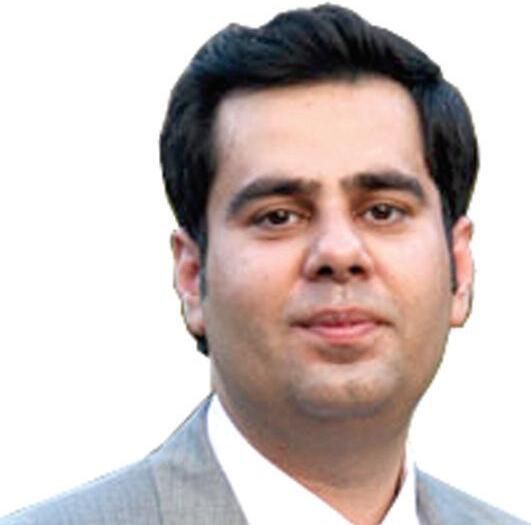

TH E world is facing the existential threat of the climate change crisis, which is fast-unfolding This situation requires both a meaningful level of fiscal space within countries especially in highly climate change challenged countries like Pakistan and development finance both as compensation from rich, advanced countries that have had a significant carbon footprint, and as climate finance provided under a strong spirit of multilateralism Sadly on both counts the situation is very suboptimal including development finance required for meeting sustainable development goals with targets set for 2030 The discussion of development finance needs to shift from billions to trillions , with reportedly around $4 trillion needed by developing countries annually to meaningfully get on track with regard to successfully meeting SDGs and climate change related goals over the medium- to long-term A June 30 Project Syndicate-published article A new vision for development cooperation pointed out in this regard The global system of financing for development– including that of development cooperation– has failed to keep pace with the vast changes the world has seen in recent decades A more inclusive and responsive model for engagement is needed to leverage the diverse capacities of all countries promote horizontal partnerships and frame sustainable development as a collaborative process rooted in shared responsibility First, development efforts must be more locally anchored– for example, through the establishment of national platforms where external partners operate under the leadership of local authorities Second multilateral action should be strengthened promoting better coordinated interinstitutional programs Lastly regional mechanisms such as the African Union and the Ibero-American General Secretariat, must be supported as they help to foster more localized and layered governance structures ’ Having said that the over-board austerity policy has made matters all the more difficult with regard to investment and government spending towards meeting
overall development and specifically climate change related goals For instance over-board use of policy rate – or monetary austerity– has led to increased debt repayment levels for instance, while higher cost of capital has negatively impacted investment levels Highlighting increasing level of debt distress in their article ‘Global public debt hit a record $102 trillion in 2024 striking developing countries hardest published on June 26 the United Nations Conference on Trade and Development (UNCTAD) pointed out in this regard Global public debt reached an all-time high of $102 trillion in 2024, up from $97 trillion in 2023, according to “A World of Debt 2025”, published on 26 June by UN Trade and Development (UNCTAD) Public debt can be a powerful tool for development Governments use it to invest in their people and economies– and pave the way to a better future But when debt grows too large or becomes too costly, it turns into a burden That is the current reality for much of the developing world ’ At the same time austerity policies have negatively impacted economic growth which has negatively impacted domestic resource mobilization effort in turn squeezing
Fixing the global development finance, and debt framework is of utmost importance, given the fast-unfolding nature of climate change crisis, significant rise in debt repayment needs, and overall debt distress, the squeezing of fiscal space at the back of developing countries overall in particular operating at significantly sub-optimal economic growth rates.


TSince then the founder of PTI has taken a bold stand. He refuses to make deals that only ser ve his own interests He says if there are going to be talks with the establishment they should be about the countr y, not about saving his own skin This has made him a symbol of resistance

This
The path he chooses now will echo for years to come
Where is SME suppor t?
MuhaMMad Bilal Khan

Belgium Defies Israel-US might: Drops aid into Gaza

IN a world where airspace over Gaza is dominated and surveilled by two of the most powerful military-intelligence complexes the USA and Israel Belgium did the unthinkable On August 4, as part of a coordinated humanitarian mission, the Belgian Air Force dropped 15 tonnes of food and medical aid over Gaza, followed by another 16 tonnes on August 5 This wasn’t just an act of delivery It was an act of conscience a rare moment of leadership that pierced through a blockade maintained by military dominance and political inertia Belgium may not have flown completely solo, but it was the first European nation to boldly participate in this form of direct aerial aid to the besieged Palestinian enclave without waiting for Israel’s green light or the USA s diplomatic blessing
This airdrop shattered the illusion that nothing could move into Gaza without Israel or US approval Until now, the humanitarian narrative had been paralyzed by paperwork, stuck at border crossings Israel controlled, or outright denied on security pretexts Belgium operating through coordination with Jordan but acting on its own decision-making rewrote that script It risked its aircraft, its diplomatic capital, and its credibility in a global environment still largely cowed by Israeli influence and US geopolitical control With US military bases spread across the Middle East like sentinels of surveillance and Israeli radar systems monitoring every approach into Gaza, Belgium s presence in that airspace was a political thunderclap
What followed was just as remarkable
Inspired by Belgium’s courage, a number of countries quickly followed France began its own airdrops delivering over 40 tonnes of aid Germany Spain and Italy joined with commitments and logistical coordination Jordan, acting as a central hub, helped facilitate these missions, while the UAE and Egypt also pledged and executed deliveries
The United Kingdom announced its intent to begin airdrops and Saudi Arabia is reportedly preparing its entry into the mis-
sion In total, over a dozen nations are now either actively participating or making logistical arrangements to deliver aid from the skies to a population pushed to the brink of starvation What makes this different from earlier statements of concern is that these actions are material not symbolic They directly bypass the decades-long stranglehold that Israel and the USA have exerted over humanitarian corridors to Gaza Belgium’s decision didn’t come with a negotiated corridor but with a moral one: the belief that starving people do not need permission slips for mercy It illuminated the fact that the world s most powerful democracies those who claim to uphold human rights had instead enforced silence through fear By dropping aid into Gaza, Belgium dropped a precedent It proved that humanitarian urgency can override geopolitical obedience In terms of international relations this moment could signal the slow dismantling of US-Israeli impunity For decades, Israel has maintained that any uncoordinated delivery into Gaza is a violation of its sovereignty The USA has echoed that position while shielding Israel from global accountability But now as countries like Belgium France and Spain take matters into their own hands, that consensus is breaking down Even in the USA, there is growing frustration The US public is beginning to question why their tax dollars fund weapons but not food And the same Congress that routinely rubberstamps military aid to Israel is now watching European nations act with moral clarity The consequences for US-Israeli dominance could be historic Because once humanitarian aid becomes unstoppable, the siege itself becomes indefensible The more countries that join this momentum the harder it becomes for Israel to justify the continued strangulation of 2 3 million civilians And the harder it becomes for the USA to maintain its credibility as a defender of international law while standing by a partner accused of war crimes What if the Muslim world now followed

suit not just with speeches and resolutions, but with economic action? What if rhetoric gave way to trade policy? If the 57 Muslimmajority countries were to impose a complete embargo on imports from and exports to Israel and the USA until the siege is lifted and a ceasefire implemented, the financial impact would be staggering Based on conservative trade data from 2024, Muslim countries import approximately $290 billion worth of goods and services
goods technology or financial services the ripple effect could hit supply chains energy markets and corporate interests in both countries Oil exports alone could be used as leverage against US support for continued Israeli aggression Trade redirection toward pro-Palestinian allies or toward neutral trading blocs could shift global economic balances But economic punishment
a
W h a t i f t h e M u s l i m wo r l d n ow fo l l ow e d s u i t n o t j u s t
w i t h s p e e ch e s a n d r e s o l u t i o n s , bu t w i t h e c o n o m i c
Ta z a w e r e
s t a r v i n g A n d n o w, a t l a s t , t h e t i d e i s t u r n i n g

W h e n t h e c r o s s b e c a m e a s w o r d

O kill or not to kill That was the dilemma 900 years ago In 1120 Pope Innocent II crossed the Rubicon by authorizing the creation of the Knights Templar in Jerusalem in the face of the threat to Christianity from Islam This meant that a religious man friars mind you not monks could stain his hands with enemy blood “Out of necessity the idea of a military Church was formulated in which its sons could mobilize with arms against the infidels explains Carlos de Ayala Martínez professor of medieval history at the Autonomous University of Madrid, over the phone Killing would not condemn you because you would be obeying God ” This question arose in the wake of the First Crusade in 1095 the military campaign to recover territories lost to the Muslims Although Jerusalem was conquered in 1099 the situation was very fragile; a stronger commitment was needed, he adds Furthermore, there was another European frontier threatened by the advance of Islam: the Iberian Peninsula That’s why Spain created its own military orders such as that of Calatrava in 1157 or Santiago (1170) Before these the Templars settled on the Peninsula as did the Knights Hospitaller and to a lesser extent the Teutonic Order, explains De Ayala, one of the experts who participated in a course on the keys to Romanesque art, entitled Art and Military: The Legacy of the Military Orders in Spain (12th-13th Centuries), held in Aguilar de Campoo (Palencia)
The Templars were very present in Aragón and Portugal and the Hospitallers or that of Saint John in Castile and León After an initial period when they arrived they soon began to be supplied with Spanish knights, says De Ayala An important difference between the orders on the Peninsula and those abroad “is that they were controlled by kings not the Pope which caused friction with the Pope ” adds this author of more than 200 articles on military orders These religious militias were made up of men mainly the so-called freires caballeros who participated in numerous battles on the Peninsula, such as the resounding defeat at Alarcos (1195), and victories such as Las Navas de Tolosa (1212) and the decisive Battle of Salado (1340)
“These knights had to be at least hidalgos members of the lower nobility and were friars therefore leading an active life in society not a contemplative one like monks They had to be at least 17 years old When they joined, they were given a piece of bread, clothing, a horse, and weapons At first, they were guided by the religious ideal giving their lives for others but over time other ideals such as fame became evident ” Its members were bound by vows of obedience chastity and individual poverty although these last two
‘O ut of necessit y, the idea of a militar y Church was formulated, in which its sons could mobilize with arms against the infidels’
Expulsion or life imprisonment was handed down to those who fell into ‘continuous fornication, sodomy, concubinage, or betrayal on the battlefield ’
‘ The problem with the Templars was their trial, which ended with their dissolution in 1312 They were accused of unproven crimes, such as idolatr y and sodomy In realit y, the King of France wanted to do away with them.’ In Spain, it was the Catholic Monarchs who decapitated the orders to bring them under their control
In 1120, Pope Innocent II crossed the Rubicon by authorizing the creation of the Knights Templar in Jerusalem in the face of the threat to Christianity from Islam This meant that a religious man friars, mind you, not monks could stain his hands with enemy blood
of Montesa (Valencia), it was ordered that if a knight wounded another, “he would be locked in shackles until the master [who commanded the order] had mercy on him ” Lack of humility was punished by “eating on the ground and being unable to scare away any dogs cats or birds that approached them Meanwhile expulsion or life imprisonment was handed down to those who fell into continuous fornication, sodomy, concubinage, or betrayal on the battlefield
Despite this difficult reality, numerous myths sprung up around the orders “The Templars take the cake; they’ve been mistreated by commercial literature because it was said to be an esoteric order For De Ayala the worst example is Dan Brown s novels ( everything is invented ) The problem with the Templars was their trial, which ended with their dissolution in 1312 They were accused of unproven crimes, such as idolatry and sodomy In reality, the King of France wanted to do away with them ” In Spain it was the Catholic Monarchs who decapitated the orders to bring them under their control
There weren t just male military orders Medieval history PhD María Ferrer-Vidal discussed those formed by women, the so-called freilas There were around 30 such convents in Europe with around 200 women in total Half of these centers were on the Peninsula because we had our own crusade here ” Unfortunately there are few materials remains of these constructions
The role of the nuns was to pray to help the knights triumph in their battles Imagine these women praying the same prayers to heaven at the same time in all those monasteries, she adds Those of the Order of Santiago recited at least 90 Our Fathers a day
Economically, they were important because “by being in the rearguard they accumulated territories that didn t require defense and could be used for example for transhumance Ferrer-Vidal explains that for these women joining these monasteries gave them prestige although many were there because they were widows of friars She specifically studied the monastery of Santa Eufemia de Cozuelos (Palencia), visited during the course of which only the church remains It was the first female monastery of the Order of Santiago in Spain
The nuns wore simple fabric in monastic colors (white black brown etc ) and had the emblem of their order embroidered on it As for their appearance, they had to keep their hair short and hidden, and makeup and eyebrow plucking were prohibited ” Javier Martínez de Aguirre, professor of art history
at the Complutense University of Madrid, spoke about the churches built in these special monasteries He wondered who was behind these religious complexes, both in terms of their financing and in deciding how they would be built and their iconography A significant proportion of the responsible parties were women He cited the striking case of the three Ramírez sisters who at the end of the 12th century, each ordered the construction of a hospital with a church, which they then handed over to the orders in towns in Navarre and La Rioja
Martínez de Aguirre focused on the kingdoms of Castile León and Navarre and on the orders of the Holy Land (the Temple the Hospitallers and the Holy Sepulchre) explaining that most of the buildings they erected had limited architectural ambition However, he highlighted some examples, such as the Church of Vera Cruz in Segovia; the Monastery of San Juan de Duero in Soria, with its well-known cloister, “evoking the Holy Sepulchre in Jerusalem”; or the Church of La Magdalena in Zamora due to its size and ornamentation These were exceptional sites because they were designated as privileged burial grounds for women of that class
But if there s one structure associated with the military orders, it’s castles David Gallego Valle, professor of history at the University of Castilla-La Mancha is working on excavations of these religious institutions especially their fortresses of which he said there were two types: Convent castles which had their church their refectory and Command castles, which, in addition to the above, administered large territories “They were more stately and had warehouses ” Most of these castles were located “in Aragón and La Mancha although there were also some in southern Extremadura and northern Huelva Surprisingly it was common for the military orders not to build their own castles but rather to take advantage of the fortresses conquered from the Muslims, which were of considerable size When the Christians took these buildings, they quickly built the keep, the church, and any other necessary elements inside ” Many Mudéjar builders participated in these projects “The conquered lands were populated by Muslims and the orders were interested in protecting those who were skilled in certain trades such as the builders
Contrary to what one might think when looking at them dominating the horizon, “a lot of botched jobs were involved in building castles,” Gallego adds “They were
As a twist of fate, over the centuries, ‘the Order of Santiago spread its well-known insignia throughout Spain, Europe, and America,’ the famous red ‘sword-cross’
done very quickly because the position they had won had to be defended They could take six or seven years to build, projects that involved women and children For many people seeing a castle built must have been the event of their lives with 200 people working at once Within the perimeter of the castle were naturally fortified churches called castrales as discussed by José Arturo Salgado, PhD in art history and professor at the University of Castilla-La Mancha Their walls were thick and often had a crypt, as a place of remembrance for the deceased ” An exceptional case is the castle of La Estrella in Montiel (Ciudad Real) belonging to the Order of Santiago which had two churches within its grounds Professor Francesca Español Bertran, from the University of Barcelona, discussed the activities of the military orders in the Kingdom of Aragón, where some churches were built “with a sense of form,” reminiscent of the Basilica of the
Sepulchre in Jerusalem due to
and
although
circular
between She
referred to the colossal monastery of Sijena founded in 1187 whose
was
of Aragón Finally,
Vázquez Castro, from the University of Santiago de Compostela, went to the other end of the Iberian Peninsula to discuss the Romanesque legacy of the orders in Galicia a territory far removed from the struggle against the Muslims However the orders came to possess 20% of Galician territory always in rural areas These militias served as a retreat for veterans Vázquez highlighted the work of the Order of Saint John in Portomarín (Lugo), which they transformed “into a thriving town ” There is the Church of San Nicolás, a fortified building notable for its height (16 meters) and the decoration of its capitals Professor Vázquez pointed out that these orders were not present in the lands of the Archbishopric of Santiago (the Order of Santiago was founded in Cáceres) because the ecclesiastical authorities opposed sharing income and land with knights it didn’t need

US VP VANCE SAYS UKRAINE-RUSSIA PEACE
UNLIKELY TO SATISF Y EITHER SIDE
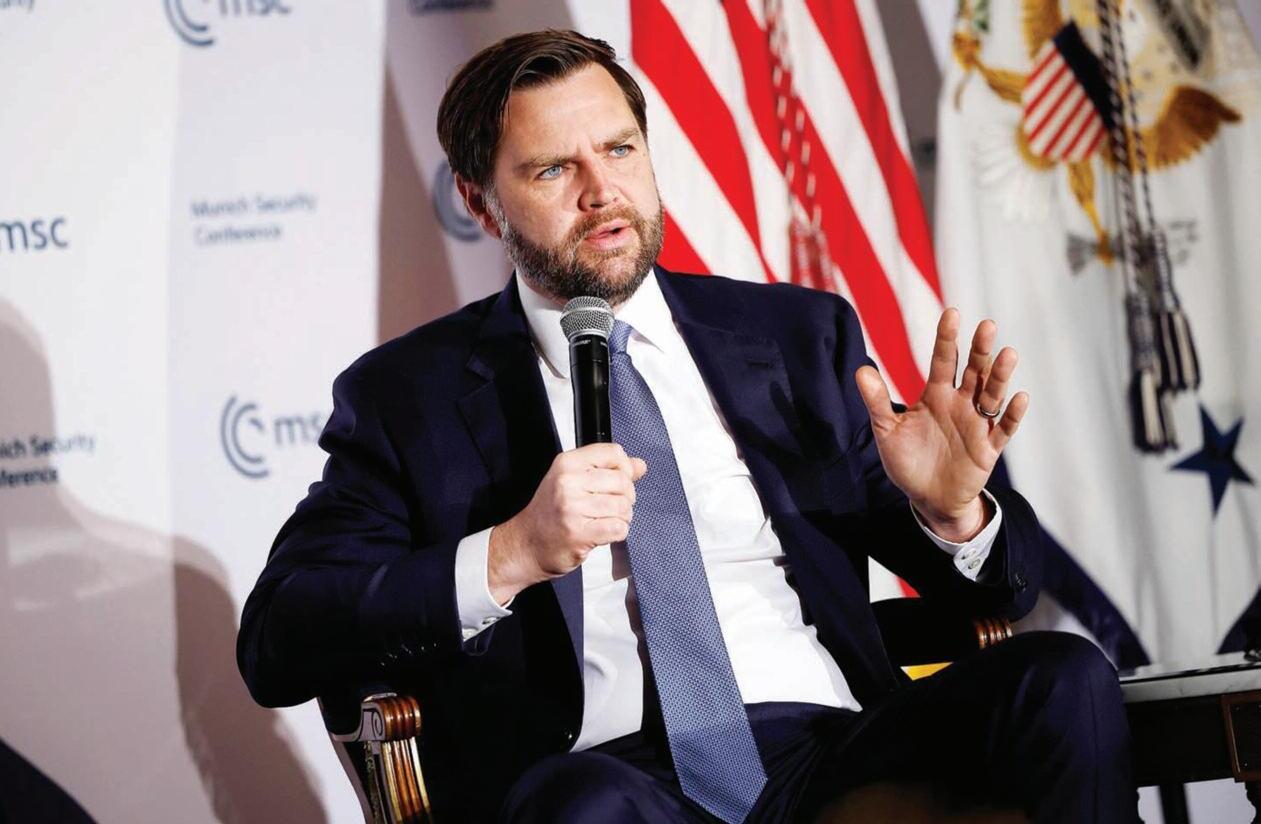
ground by force " The statement warned that the move constitutes a continuation of
violations, including "killing and
displace-
attempts at
and annexation of
and settler
the document states may amount to crimes against
coalition also warned that such measures "obliterate any opportunity for peace, undermine regional and international efforts towards de-escalation and peaceful resolution of the conflict and exacerbate the severe violations against the Palestinian people The countries and blocs involved in the statement demanded an "immediate and comprehensive cessation of the Israeli aggression" in Gaza, the West Bank, and East Jerusalem They also called for the unconditional entry of humanitarian assistance into Gaza and the freedom of operation for all relief agencies stressing the urgency of addressing the dire humanitarian situation on the ground
Thousands took to the streets in Tel Aviv on Saturday to call for an end to the war in Gaza, a day after the Israeli government vowed to expand the conflict and capture Gaza City Demonstrators waved signs and held up pictures of hostages still being held in the Palestinian territory as they called on the government to secure their
to clean water or washing facilities, many women risk developing chronic infections In some extreme cases, untreated infections can lead to infertility, further compounding the health risks for women already burdened by financial hardship
Maternal health crisis: The challenges these women face go far beyond menstruation The lack of proper maternal care is one
risk but also threatens the well-being of the unborn child
Maternal mortality in Pakistan remains high, with an estimated 178 deaths per 100,000 live births (according to the World Bank), a number that is considerably higher than the regional average The absence of adequate prenatal care often leads to conditions such as preeclampsia gestational diabetes and anemia which can be fatal if not properly managed In some cases pregnancies go undiagnosed for complications like Down syndrome or other congenital disabilities, meaning that children born with disabilities may not receive the care they need early enough to address medical challenges
Moreover postnatal care is equally critical A 2020 study from the International Journal of Gynecology and Obstetrics revealed that many women in Pakistan receive little to no support following childbirth leading to complications such as postpartum hemorrhage and sepsis These preventable conditions are often ignored, and the women suffering from them may not even be aware of the treatments that could save their lives

Call for action by the Government
Given the gravity of these issues it is clear that the Pakistani government must take urgent action to introduce meaningful reforms that could improve the lives of millions of working-class
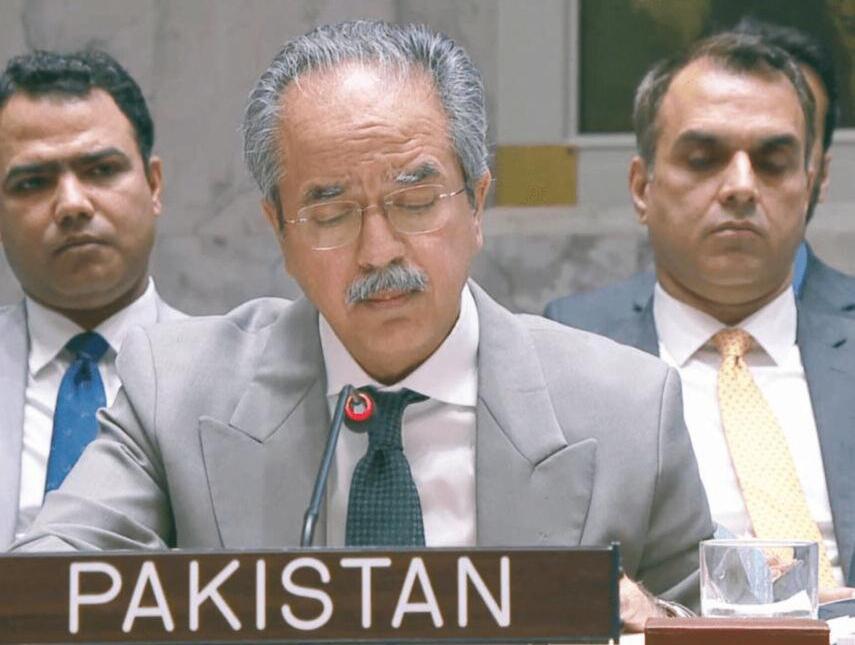



B ahria Universit y Karachi Campus holds 21st convo c ation
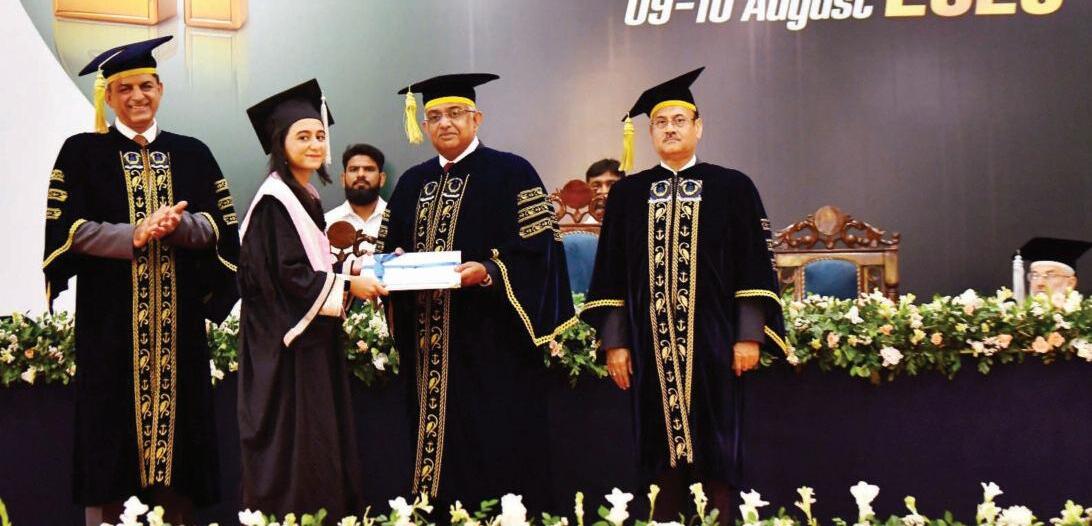

Young Ar tists Invited to Compete for ‘Arjumand Painting Award 2025’
the Senior Minister directed dumper owners to ensure that cameras trackers insurance and driver s licenses are mandatory in all dumpers Additionally a committee is being formed to assess the losses suffered by the transporters PCMEA hails TDAP for foreigners' hospitalit y package
LAHORE
s ta f f r e p o r t
The Pakistan Carpet Manufacturers and Exporters Association (PCMEA) has paid homage to the Trade Development Authority of Pakistan (TDAP) for greenlighting an attractive hospitality package for the upcoming 41st International Handmade Carpet Exhibition scheduled to be held in October this year The Association stated that the package was designed after extensive consultations and is aimed at attracting a maximum number of foreign buyers to Pakistan According to the Association, buyers from Germany China the United States the United Kingdom Hungary Turkey and several other countries have already shown keen interest in participating in the prestigious event Industry leaders view this response as a highly encouraging sign for Pakistan s handmade carpet sector These remarks were made by PCMEA Chairman Mian Atiqur Rehman and Chairman of the Exhibition 2025 Riaz Ahmed while addressing an Association meeting
The session was attended by Patron-in-Chief Abdul Latif Malik Carpet Training Institute Chairperson Ejazur Rehman, and senior industry figures including Major (R) Akhtar Nazir, Saeed Khan, Muhammad Javed Khan, Sheikh Sohail Ahmed, Zahid Nazir Zafar Idrees Solija Naeem Sajid Naeem Khokhar Mir Mudasar Faisal Saeed Khan Saeedur Rehman and Asif Nazir Khan among others
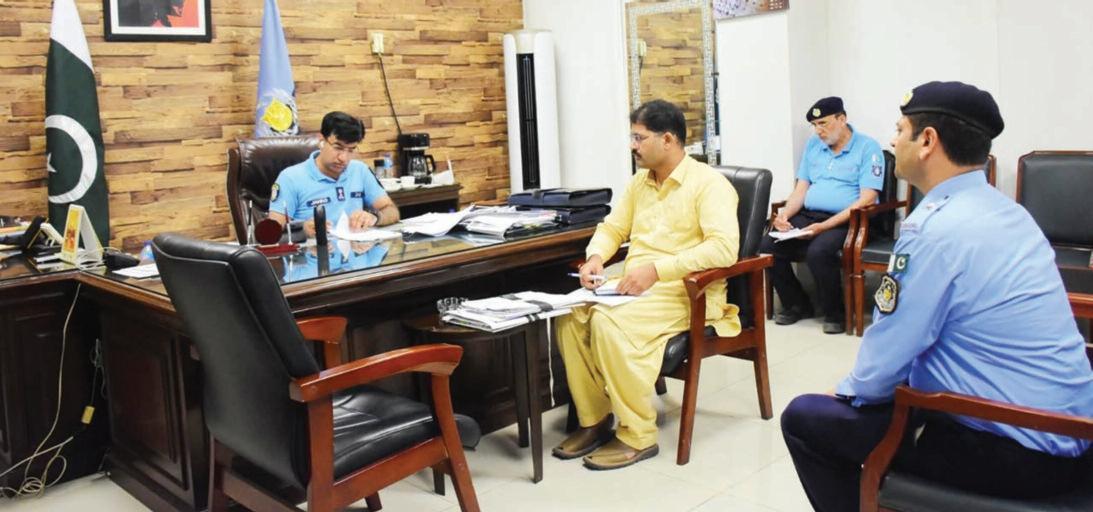
gives them respect and encouragement to continue their practice ”



